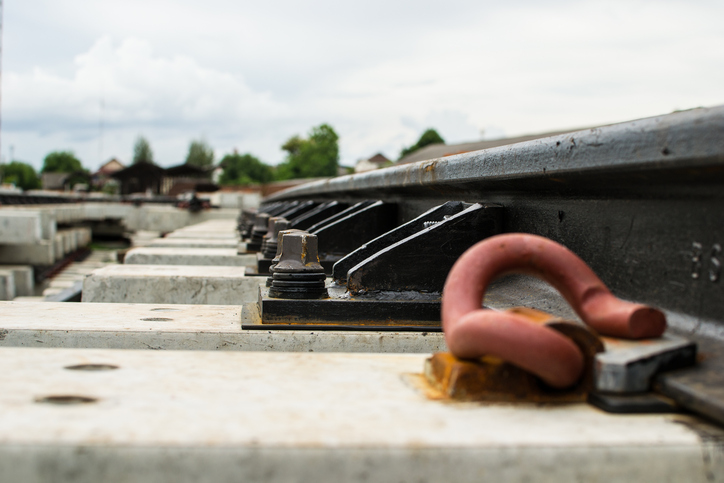
The aim of the project is to develop a novel rail pad system that is optimized with respect to both railway noise reduction and protection of the railway superstructure against transient loads and vibrations.
With the continuous growth of railway traffic and population in Switzerland, railway noise has become a severe environmental problem. At typical railway speeds, the most relevant source of noise is “rolling noise” emitted from the wheel and from the rail. One approach to reducing rolling noise without the cost-intensive addition of novel components to the railway track is to improve the rail pad, which forms part of the rail fastening system and typically consists of a simple rubber cushion inserted between the rails and sleepers. The aim of this project is to develop a novel rail pad system that is optimized with respect to both railway noise reduction and protection of the railway superstructure against transient loads and vibrations.
To this end, the partners will develop rail pads that show a strongly frequency-dependent mechanical response. The desired property profile requires tailoring of the structure and function of the rail pad system at multiple levels and length scales. This approach will allow us to explore solutions based on a broad range of materials while, at the same time, focusing on track components used in Switzerland.
The project target is a significant noise reduction in comparison with the currently employed “soft” rail pads, without altering existing track maintenance requirements. The newly developed rail pads will remain compatible with existing railway superstructure in Switzerland. The project will cover initial exploratory materials selection and modeling methodology development, targeted development of a new rail pad, and final product development, including scale-up and field-testing in real railway tracks.
The project will be carried out by the following EPFL laboratories: Laboratory of Macromolecular and Organic Materials, Laboratory for Processing of Advanced Composites, Laboratory of Applied Mechanics and Reliability Analysis, Signal Processing Laboratory 2, and the Transportation Center. Moreover, the Haute Ecole d’Ingénierie et de Gestion du Canton de Vaud (HEIG-VD), Empa’s Laboratory for Acoustics and Noise Control and SBB Infrastructure will be research partners in the project, which will also be joined by industry partners.
| Principal investigator | Prof. Holger Frauenrath |
| Sponsor | Federal Office for the Environment |
| Period | 2017-2022 |
| Laboratories | LMOM, LMAF, LTS2, LPAC, TRACE |
| External partners | EMPA, HIEG-VD, SBB-CFF-FFS |
| Collaboration | TRACE |